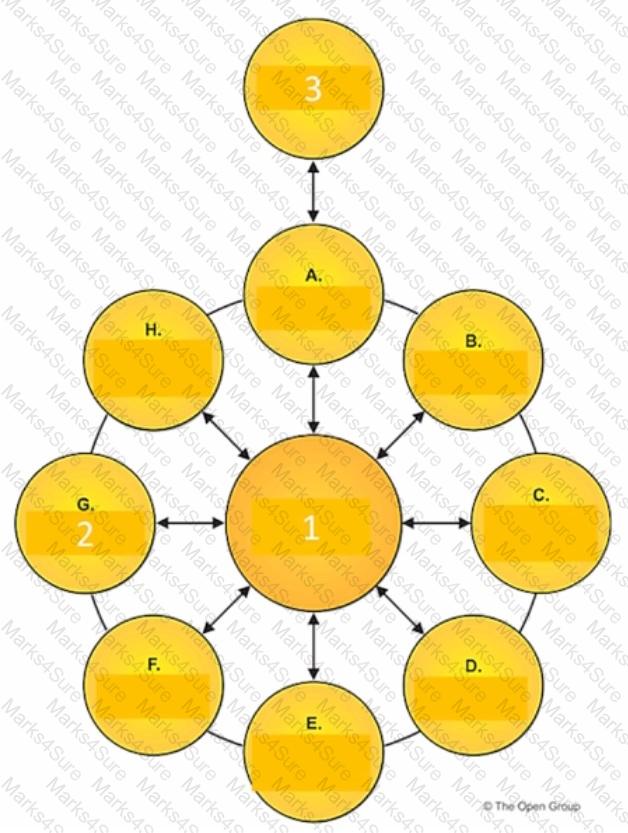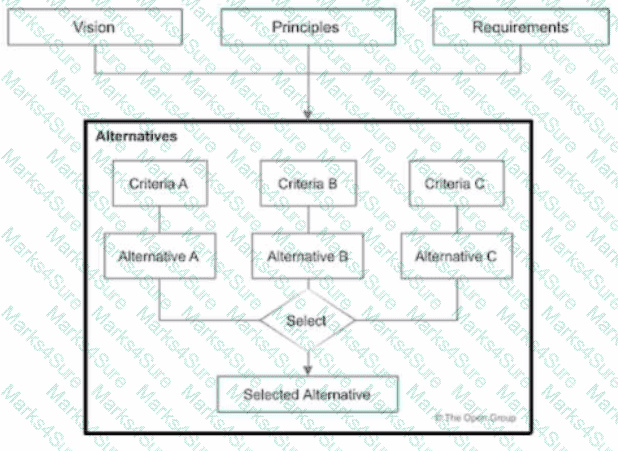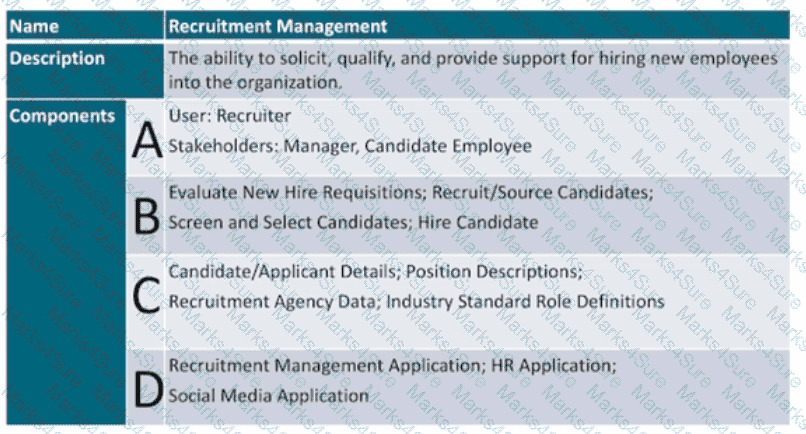When considering the scope of an architecture, the architect considers the level of detail for the architecting effort. What is this dimension of the scope called?
Which approach to modeling business value is designed to create and end-to-end perspective of value from the customer's perspective?
Which of the following best describes why business model innovation should be approached in a structured manner?
Consider the following extract of a model showing relationships between Business Architecture concepts:
What is the relationship labeled X?
Exhibit.

Consider the diagram of an architecture development cycle.
Select the correct phase names corresponding to the labels 1, 2 and 3?
Consider the following example value stream:

Which of the following statements is most correct?
In what TOGAF ADM phase should the architect locate existing architecture descriptions to create an information map?
Which of the following is the application of the concepts of risk assessment and risk analysis in the decision-making process?
Which of the following describes the concept of an Enterprise Architecture Capability?
Which of the following is the element of a value stream stage that describes the state change that triggers the value stream stage?
Which of the following best describes the relationship between business models and business architecture?
Consider the diagram of an architecture development cycle.
Which description matches the phase of the ADM labeled as item 2?
Which approach to model, measure, and analyze business value is primarily concerned with identifying the participants involved in creating and delivering value?
In what TOGAF ADM phase is the organization map linked built out with the detail and relationships to overviews in order to understand the needs of the organization?
Consider the following representation of a business model:
Which of the following business models is this an example of?
Which of the following can be used to help define information concepts in an information map?
Consider the following graphic from the TOGAF Standard:

Why is this method used?
In Phases E and F, what deliverable Includes actions from the Business Transformation Readiness Assessment?
What are the following activities part of?
• Initial risk assessment
• Risk mitigation and residual risk assessment
• Risk monitoring
Consider the following Business Capability Example:

Which of the following are A and C?
What can architects present to stakeholders to extract hidden agendas, principles, and requirements that could impact the final Target Architecture?
Consider the following descriptions of deliverables consumed and produced across the TOGAF ADM cycle.

Complete the sentence. Deliverable 1 Is an output from the________________ , deliverable 2 is a companion to the_________________
Complete the sentence. The architecture domains that are considered by the TOGAF standard as subsets of an overall enterprise architecture are Business, Technology,
In which phase of the ADM cycle do building blocks become Implementation-specific?
In which part of a business scenario are business capabilities and value streams modelled?
In the ADM, what is the name for a document deliverable that has completed a review and is approved?